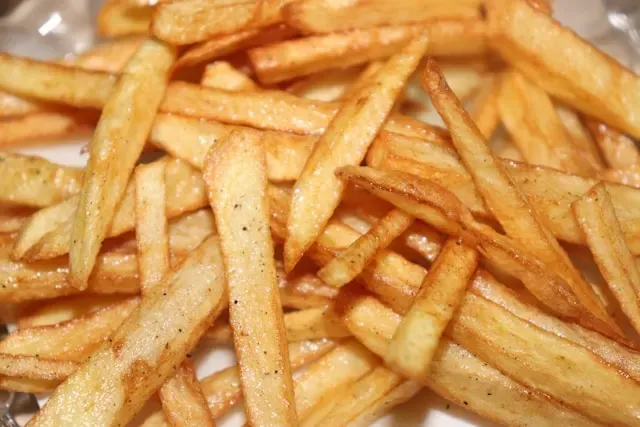One of the great joys of cooking is taking the most basic of foods and preparing them in new and exciting ways. About two years ago, my wife opened my eyes to a delicious staple of Indian and Moroccan cuisine that is made in a very elementary way, the preserved lemon.
The lemon itself is one of humanity's most ancient foods. Like the pomegranate, the lemon comes from the northern Indian valleys around Kashmir and is featured in the most ancient myths and texts of our history. Its bright yellow skin certainly makes it one of our most striking and colorful fruits. And its nearly universal utility for all dishes from fish to lemonade make it a perfect food. In the summertime it makes our lemonade, and in the winter it goes in our tea.

In truth, a preserved lemon is simply a pickled lemon packed in lemon juice and salt. The brine softens the rind over time and the end result is meant to be eaten in pieces, draped over dishes or cooked directly into the dish. In a preserved lemon, the sour notes become more intense and are brought to the forefront of every bite with a deeper mouthfeel.
Preserved lemons have become so popular in our country that stores like Trader Joe's now regularly carry them. Additionally, Middle Eastern specialty stores, ethnic markets, and of course the internet are all great places to buy preserved lemons. But truthfully, they're not a very good value: many bottles run around ten dollars or more. Since lemons can be purchased relatively cheaply (or free in my case, as my California backyard has a lemon tree), it's well worth it to make your own which you can then modify to your tastes. The only thing that purchasing them at the store saves is time, as preserving the lemons will take at least a month. But the resulting preserved lemons can be stored for up to six months and this way you can have them at the ready for all sorts of dishes and occasions.
What can you use them for? The true question is what can't they be used for. Their most famous use is in Moroccan tagines. Those stews cooked in a clay pot are perfectly suited to be baked with preserved lemons draped over them to give them a more dignified flavor than simply spritzing the juice which can penetrate everything as opposed to blending in to various degrees with each bite. In South Indian food, preserved lemons accompany curd rice.
But Susan Chang points out on NPR's food blog, make sure the others in your house know what the preserved lemons are. They may mistake them for an experiment gone wrong and chuck them! Making preserved lemons is such a fun and simple task that you'll do it in no time.

Cut & Salt
You'll want to start with two large lemons and another three or four for the juice. Daring Gourmet notes that Meyer lemons are used in Morocco, but Eureka or Lisbon work as well. Wash them and cut the tips off. Next cut your first lemon lengthwise from the nipple-like end. But be careful to not cut the lemon all the way through. Leave it connected at one end so that when opened you have a lemon flower of sorts. Take some sea salt and liberally sprinkle it into the opening of the lemon. Make sure it's thoroughly covered.

Jam It
You'll need some sort of jar or sealable glass container. Sprinkle a layer of salt at the bottom. Next jam your lemon into the container, squeezing some more of the juice out. Go ahead and sprinkle some more sea salt on it for good measure.
Drown It
Cut your extra lemons and squeeze their juices onto the lemon in the jar. Be sure to cover it completely in juice.




Repeat
Do the above steps again with your second lemon. Cut, salt, and jam your lemon on top of your first one. And again, cover everything with lemon juice and salt. Don't throw out your juiced lemon, throw it in as well. And if you'd like you can top everything off with sterilized water that's been boiling but now has cooled.
Salt & Wait
Close the lid of the jar tightly or seal your container and put it in a cool dark place. Agitate it on the third day to move the juices around. Then place it in your refrigerator for about three weeks. This refrigeration step is based on USDA recommendations but people around the world preserve their lemons at room temperature. Either way is fine. Your preserved lemons will take no less than those three weeks and will probably be ready closer to a month.
Gut Them
A month later, once they're ready, take out the lemons. They will have gone soft. Gently remove the pulp since all you'll be using are the rinds. Wash off any salt that may be clumping on the lemons.

Use & Enjoy
The sky's the limit on what you can use your preserved lemons for. Fish is the most obvious pairing but there's no reason they can't go with roasted pork or even barbecued beef. Since citrus is such a valuable component of Mexican food, I've included it in many stews and even tacos that I make at home. On the weekends, preserved lemons make great additions to Bloody Marys. Enjoy!
Lemons Make Everything Better
Learn how to ream lemons and other citrus without any special tools, how to make zest without a zester and this pro tip for getting every last bit of juice from lemons and limes.
Photos by Mario Hernandez/Food Hacks

























Comments
Be the first, drop a comment!